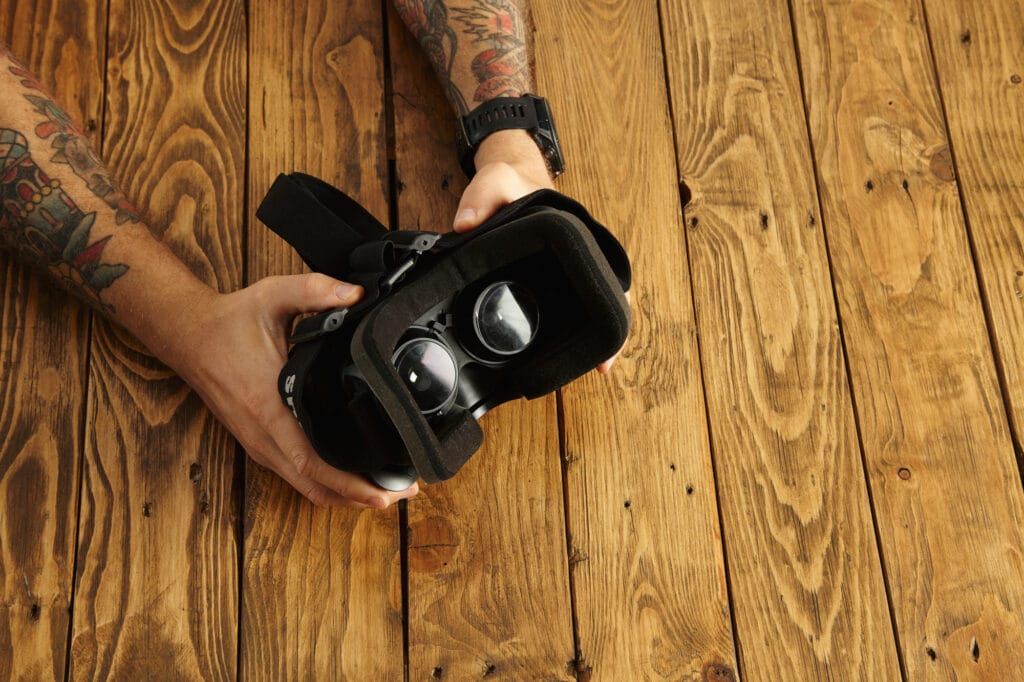Experiencing motion sickness can feel awful. Symptoms can include nausea, vomiting, dizziness, headaches, and fatigue. The feeling can last hours after its onset. Some people experience it while in the car, others when in low turbulence on an airplane. According to software engineers who develop extended reality experiences, about 25% of individuals experience motion sickness in VR. So what is it, how do we prevent it, and if it occurs, how do we overcome it?
What is Motion Sickness in VR?
Motion sickness occurs due to mixed signals from different sensory inputs going to your brain. When you become motion sick in the back seat of a car, it’s because you can feel your body moving, but your eyes show you that you’re not. When your vestibular system, or the system which controls balance and eye movements, becomes de-synchronized, your brain registers this as confusion and motion sickness results.
Designers of VR experiences try to create a feeling of presence for VR users – meaning you feel fully immersed in the virtual space. While this is needed to make the experience as realistic as possible, your eyes end up registering movement while your body doesn’t. In VR, the external sensory information does not match the internal scenario you are involved in, and symptoms of motion sickness can arise.
Tips for Preventing & Overcoming Motion Sickness in VR

1. Find the right headset
In older headsets, frame rates would be low, and the gap between moving in real life and seeing it in virtual reality was large. While most big-name headsets operate in a frame rate of at least 90Hz, if you’re looking for a cheaper option or connecting to a PC, ensure you’re getting a frame rate of at least 60Hz. This frame rate will help in reducing the confusion between your eyes and your body.
A 6DoF headset will also reduce motion sickness as your body can move and react within the scenario. Make sure your lenses are clean and the IPD on your headset is set correctly. Taking these steps before entering the scenario should help mitigate risk.
2. Start slowly
When starting in virtual reality, don’t go all-in too quickly. Try to take frequent, short breaks when you begin by taking off the headset and breathing deeply. Gradually increase the amount of time you are in the scenario to get used to the experience and allow your body to adapt.
3. Eat ginger
Ginger can help in reducing nausea. Eat this an hour before going into the headset if you are prone to motion sickness to help reduce the risk. Alternatively, if you begin to feel nausea from being in the scenario, eat some afterward.
4. Aim a fan on your face
Fresh air can help in preventing or calming any symptoms of motion sickness. Try to aim a fan towards your face when in a VR headset to stop any discomfort before it starts and stop any overheating. Feel free to also do this to overcome feelings of motion sickness.
5. Add more physicality to your experience
If possible, try to move with your experience rather than remaining still. For example, in a 6DoF scenario, try to turn your body instead of using the thumb stick. You can also purchase items that specifically help this, such as a VR treadmill or cyber shoes. Your body will then reduce the confusion between what you’re seeing and what your body is experiencing.
If motion sickness does occur, it’s essential to catch it early to avoid prolonging its effects. If your face or ears start to feel hot, take the headset off, try to get some fresh air, and take a break. Not all of these tips will work for you. Try to find games and scenarios that limit any discomfort. Most training scenarios keep you in one position or allow for teleportation, reducing the chance of motion sickness.
Are you currently looking for a VR vendor? The long-term viability of your project depends on choosing the right one. Here are 15 questions every VR vendor should be able to answer:
Download the checklist: 15 Questions for your VR Vendor.
Latest Posts
Stay in the Know
Want to stay up-to-date with what is going on in the world of immersive training? Subscribe to the Motive Blog.
Ready to revolutionize your training program?
We’re ready to show you how seamlessly you can create, edit and deploy VR training modules. Our team is standing by to help you revolutionize your training program.





